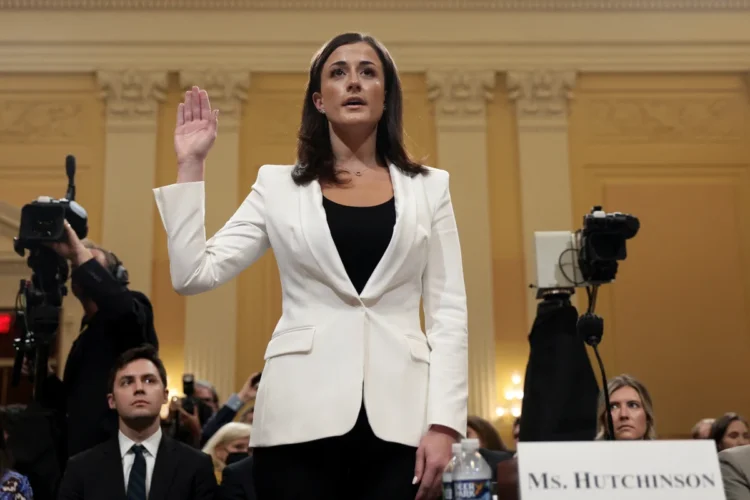By Aaron Miller-
Former Donald Trump aide, Cassidy Hutchinson, has raised the prospect that Donald Trump might have had a line of communication to the leaders of the extremist groups that stormed the Capitol.
During Ms Hutchkinson’s testimony, she made reference to Trump’s order to his White House chief of staff Mark Meadows, to call Roger Stone and Mike Flynn – which Meadows did – the evening before the Capitol attack.
Investigators looking into the events of January 6, are also seeking to determine whether Trump knew that Proud Boys and Oath Keepers would storm the Capitol, and whether Trump was in contact with their leaders who have since been indicted for seditious conspiracy.
The sworn testimony from Hutchinson about Trump’s order to Meadows suggests that the former U.S president wanted to learn what plans had been drawn up for the extremist groups regarding January 6, and wanted his aide to connect with Stone and Flynn.
Next week Tuesday, at its seventh public hearing led by congressman Jamie Raskin, the select committee is poised to examine the connections between Trump and the extremist groups in closer detail, according to a source familiar with the investigation. There seems to be a lot to go after.
The account of Trump’s order was not the only link from the White House to the extremist groups. Hutchinson also testified that she recalled hearing the terms “Oath Keepers” and “Proud Boys” whenever former Trump lawyer Rudy Giuliani was around at the White House.
The Trump “war room” that Hutchinson referred to in her testimony appears to have been the one set up by Giuliani and Eastman, and staffed by other pro-Trump figures including lawyer Boris Epshteyn, Trump’s former strategist Steve Bannon, and Giuliani’s aide Bernie Kerik.
Its overall objective was to help pressure then vice-president Mike Pence to refuse to certify Biden’s election win and send it to the House of Representatives in a contingent election, or failing that, delay the joint session beyond 6 January 2021.
While Stone also had a mid-size suite at the Willard hotel on 5 January and 6 January, it was a different room that was totally separate to the “war room” put together by Giuliani and Eastman. Flynn was also briefly at the Willard, but again, did not lead the “war room”.
Hutchinson testified that Trump wanted Meadows to call Stone and Flynn- a directive believed to have been aimed at other avenues designed to stop Biden’s certification of election victory at the time.
The select committee, the sources said, is for the same reason also examining whether Meadows initially expressed an interest in going to the Trump “war room” at the Willard the night before the Capitol attack before being talked out of the idea by Hutchinson.
Most observers analysing the situation believe it is plausible that Trump contacted Stone on 5 January 2021, to get a sense of what extremist groups might have been planning for the next morning.
Under suspicion of extremist links: Donald Trump Image: TASOS KATOPODIS
Trump has always shown a tendency to support the views of far right extremist groups, making his past position in high political office , as well as his future ambitions, very worrying for his many critics.
During his televised debate with Joe Biden as part of the election campaign, when asked to denounce the actions of proud boys, he asked them to step back and standby, an implicit refusal to outrightly condemn their extremist views.
And when illinois GOP Rep. Mary Miller on June 26, thanked Trump for “the historic victory for white life, the former U.S president did not looked shocked or disappointed at all, but had a smirk on his face. Although Miller later claimed the statement was a slip up, that claim remains very doubtful.
Trump still hopes to have another crack at the U.S presidency in 2024, but those who have him under the microscope are determined to do all that is possible to prevent that.





